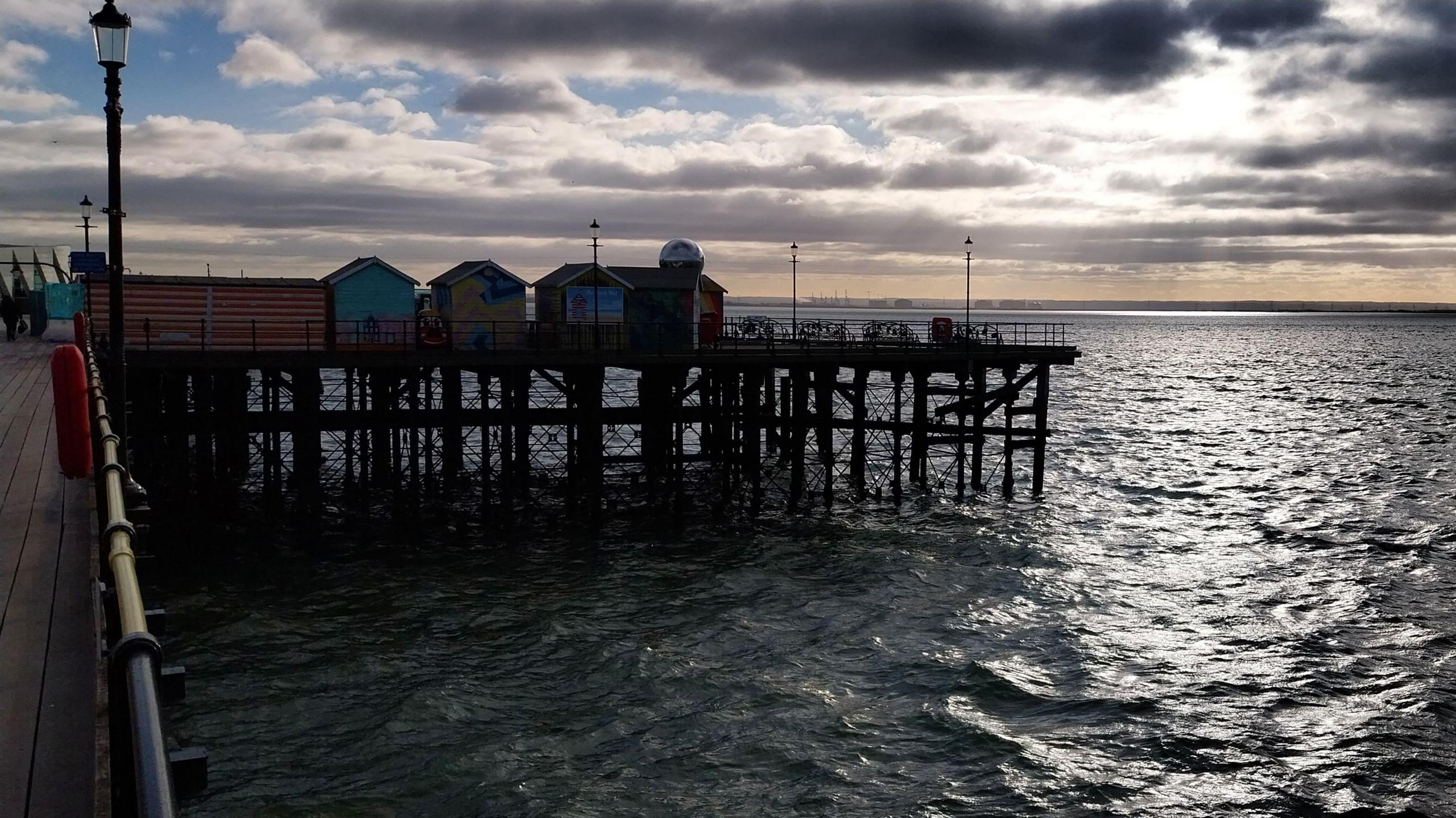Coastguard warns about D-Day harbour dangers
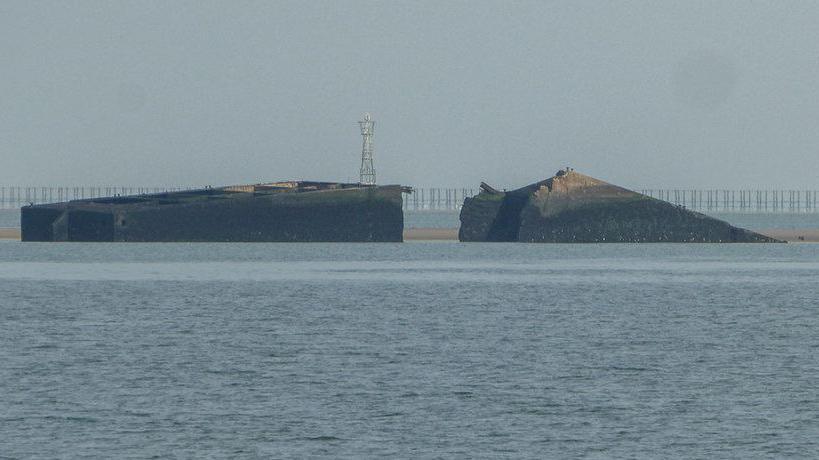
The Mulberry Harbour is one mile (1.6km) off shore from Thorpe Bay
- Published
The coastguard has warned visitors against visiting a D-Day Mulberry Harbour, lying on the seabed off Essex.
Mulberry Harbours were temporary floatingpiers used off the coast of France to ensure the flow of vital supplies and reinforcements for the Allied invasion effort in World War Two in 1944.
The one at Thorpe Bay sprung a leak on its way to Normand, external and was brought into the Thames estuary and allowed to sink.
HM Coastguard Southend-on-Sea said it had an "an increase in avoidable call outs" every summer, caused by its visitors getting cut off by high tides.
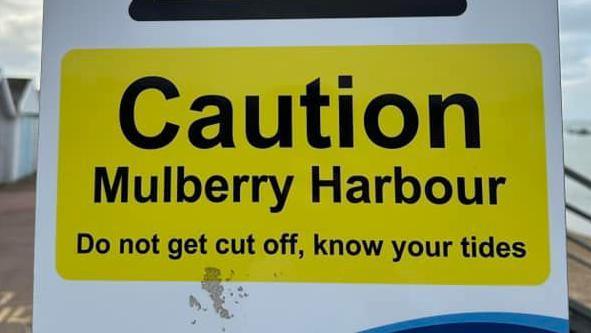
The coastguard said the "published time of low tide is an estimate" and warned the tide "turns half an hour before you notice it over the sands"

The Mulberry Harbours stretched for miles, allowing troops and supplies to support the allied invasion 80 years ago
The coastguard said: "Whilst this historic feature is a reminder of the sacrifices 80 years ago for our freedoms today, it remains MOD property and continues to attract visitors especially in warmer weather and causes an increase in avoidable call outs for HM Coastguard."
It has advised visitors to check tide times and wear shoes, external if they do walk out to the structure, which is one mile (1.6km) off shore.
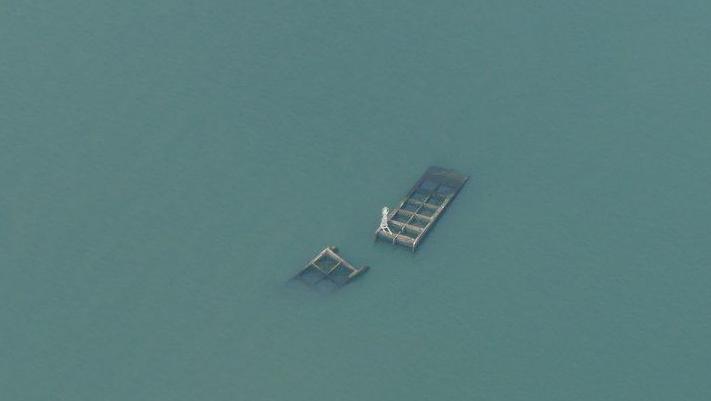
Thorpe Bay's Mulberry Harbour never made it to France, having sprung a leak while being towed from Immingham, on the River Humber, to Southsea ahead of D-Day
Follow Essex news on Facebook, external, Instagram, external and X, external. Got a story? Email eastofenglandnews@bbc.co.uk, external or WhatsApp us on 0800 169 1830
Related topics
Related Internet Links
- Published2 June 2024
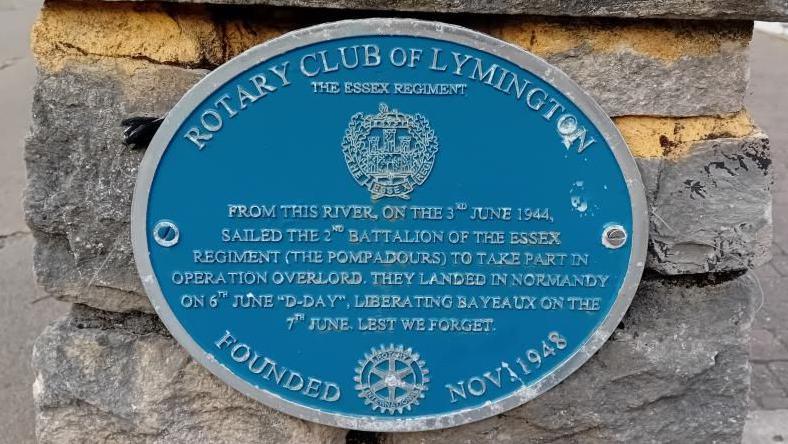
- Published1 June 2024

- Published1 June 2024

- Published18 May 2024
